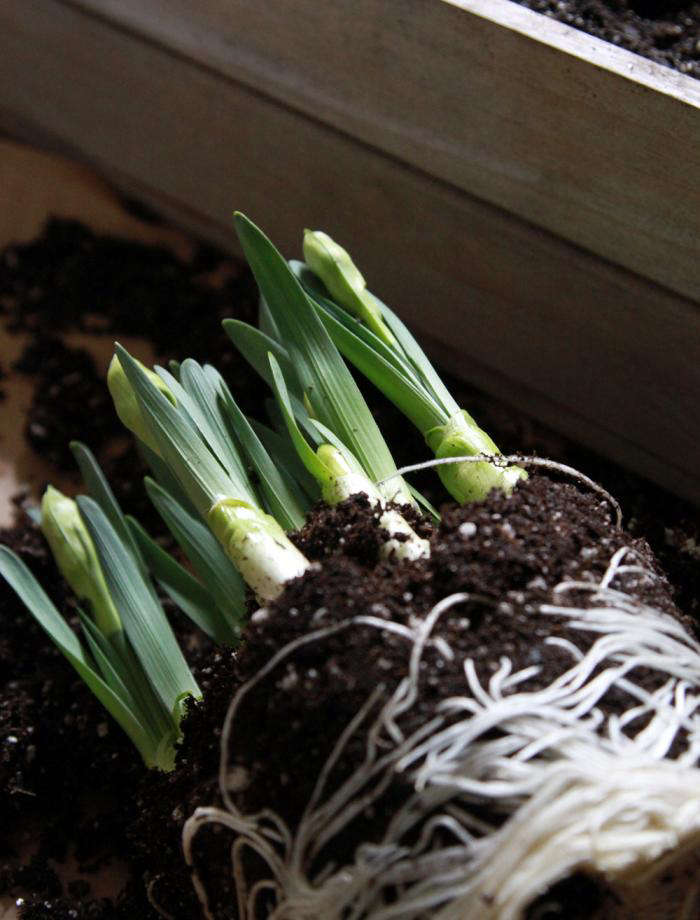It can be hard to know what to do with a window box as the weather gets colder. Some of my Brooklyn neighbors will let their boxes sit empty for the coming months, while others will plant miniature evergreens and replace them with plants of the flowering variety in warmer weather. I admit that I like to take a slightly different approach. Instead of planting my winter window box, I decorate it. Here’s how:
Photographs by Erin Boyle.

Above: Last weekend, I took the train to my parents’ house outside the city and returned with a brown paper bag filled with wintry trimmings to spruce up my box for the winter and to add holiday cheer.

Above: I began my search with a walk around the yard, scoping out low-hanging branches on evergreen trees and bushes. I wanted a variety of colors and textures, so I took clippings from umbrella pine branches, cedar trees, and holly bushes and gathered as many pine cones as I could find. If you don’t happen to have a place nearby where you can forage for wintry clippings, you might have luck at a local flower shop or Christmas tree lot. In my neighborhood in Brooklyn, just about every corner flower shop is hawking big bunches of bright red winterberry and juniper clippings this month.

Above: I kept the soil in my window box (if I’m lucky, the perennial forget-me-nots I planted in April will bloom again next year) and trimmed my vinca vines for the winter. Large clippings from white pine or cedar trees make a good first layer, so I began by tucking alternating branches into the soil.

Above: I made sure to bury the very ends of my clippings in an effort to help them stay green for as long as possible. If the temperatures are cool, the greens should last a month or two before beginning to brown. When they dry out, it will be easy to make a swap for something fresh.

Above: After the first layer of pine and cedar, I tucked pine cones into bare spots and stuck shorter holly clippings vertically into the dirt to help anchor the larger branches and pine cones. The result is festive for the holidays and makes for good protection for the soil during the long winter. With the window box tucked into the rear of our building, not many neighbors get the chance to see it, but it’s adding cheer to our tiny apartment and that’s good enough for me.

Above: The completed box. To see what my window boxes look like in the summer, see DIY: A Window Box Grows in Brooklyn.
For more urban garden ideas, see DIY Vertical Garden Kit: Just Add Water (and a Wall).
N.B.: This is an update of a post published December 3, 2012.












Have a Question or Comment About This Post?
Join the conversation (2)